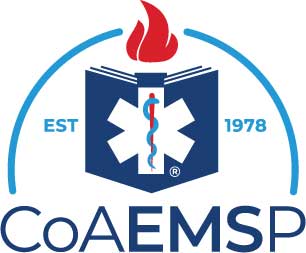
When it comes to the education of health professionals, accreditation is recognized as an essential ingredient in an effective healthcare system. Accreditation establishes standards that ensure high quality education that results in a reliable, consistent, and competent workforce, which in turn can enhance healthcare outcomes.
The Committee on Accreditation of Educational Programs for the Emergency Medical Services Professions (CoAEMSP) provides the accrediting activities for more than 750 paramedic programs nationwide on behalf of the Commission on Accreditation of Allied Health Education Programs (CAAHEP), the only nationally recognized accreditation organization for paramedic education.
Education Quality
Accreditation is about quality and accountability in education. It is “the process of formal evaluation of an educational program, institution, or system against defined standards by an external body for the purposes of quality assurance and enhancement.” In the spirit of continuous quality improvement, the accreditation process provides feedback – both from accreditation staff and peer reviewers – to identify areas for improvement as well as best practices and potential innovations. This continuous enhancement process can also prevent the stagnation or “fossilization” of a program.
Paramedic programs benefit from accreditation as it assures quality education standards and provides peer support to meet those standards and realize consistent achievement by students.
Student Competency
Accredited programs promote safe and effective learning environments while continuously improving to prevent outdated or harmful practices. Paramedic students can be confident that successful completion of study at an accredited paramedic program will make them eligible to sit for the NREMT exam to be nationally certified as a paramedic and be recognized as professionally competent by potential employers.
Accreditation benefits paramedic students, ensuring the program meets essential national standards.
Workforce Readiness
Paramedic students must graduate from a CAAHEP-accredited paramedic program in order to be eligible to sit for the National Registry of Emergency Medical Technicians (NREMT) exam to become a nationally certified paramedic. The National Registry is recognized in every state and is required in 47 states to be eligible for a paramedic license.
Among paramedics, all of whom attended an accredited paramedic education program in 2022, 71% passed the first test, and 85% passed within three cumulative attempts. Accredited paramedic education programs must maintain a 70% cumulative pass rate within three cumulative attempts. When students pass the NREMT exam, it is an indication that they have mastered key education standards and are entry-level competent to join the paramedic profession.
The paramedic profession benefits from accreditation by meeting national education standards to ensure a well-prepared and qualified workforce.
Healthcare Outcomes
Accreditation ensures programs meet minimum standards, thus decreasing the potential variation in both content and quality between institutions. Accreditation also promotes innovation and the adoption of new norms throughout the education system. By reducing the potential variances between programs, accreditation not only ensures the competence of potential graduates but also their ability to effectively operate in any healthcare setting.
The public can be assured that, no matter where they are in the nation, paramedics have received the education to deliver quality care in a consistent manner.

